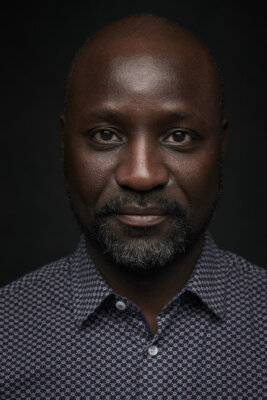Award-winning Alberta-based poet to work with students and aspiring writers
Since its inception 15 years ago, Athabasca University's (AU) Writer in Residence program has introduced students, faculty, and the wider community to exceptionally talented authors. This year is no different with Bertrand Bickersteth joining AU as the 2024-25 writer in residence.
Bickersteth was born in Sierra Leone and raised in Alberta. He has received multiple awards for his collection of poetry The Response of Weeds. His writing has appeared in Geist, Prairie Fire, The Walrus, The Sprawl, CBC's Black on the Prairies, and more. A forthcoming poem will be published in Biblioasis's Best Canadian Poetry 2025.
Recuperating Black history through research and poetry
As AU's writer in residence, Bickersteth will split his time between working on his own writing projects and working with other writers at AU and beyond.
"Thanks to this residency, I now have something of an exquisite pleasure to be able to anticipate a long stretch of time in which I can devote significant energies to writing," said Bickersteth, who lives in Calgary and teaches written and oral communications at Olds College.
His current project involves writing poetry about Black cowboys who lived and ranched in Western Canada during the early period of the 20th century.
"I can't wait to create this collection of poems and breathe life back into this aspect of our history, which has not only been forgotten, but which encompasses an area of our identity here in Alberta that we see as central."
Connecting to AU's creative writing community
 When he's not writing, Bickersteth will serve as a resource to students, faculty, and the creative writing community at large.
When he's not writing, Bickersteth will serve as a resource to students, faculty, and the creative writing community at large.
"I hope to help create a writing community that people can feel connected to and help give writers a sense of self-worth and legitimacy. In particular, I want to reach out to folks who identify as Black and Indigenous and people of color in general to reaffirm their sense of belonging here too," he said.
Bickersteth sees the role of writer in residence as having a special power—with the "potential to make students feel like legitimate creators."
He remembers the struggles he experienced as an emerging writer and thinks about what would have helped him succeed.
I see my role as reinforcing students' sense of identity as writers and helping them to find their path forward, whether that be overcoming a plot issue, learning about a particular author or literary movement, or connecting them to other writers.
Bickersteth will participate in public events such as featured talks and question-and-answer opportunities. He is also available for one-on-one consultations with creative writers who are looking for personalized feedback on their work.
"Stories from their particular, quirky, left-handed, queer, autistic, curly-haired, dry-skinned, muffin-topped, gap-toothed, tongue-tied, full-on freaky corner of the world count too! Send them to me," Bickersteth said.
These activities are all aimed at providing participants with advice and unique insights on the writing process, from taking a manuscript from creation to publication.
Stay tuned for more announcements about the 2024-25 writer in residence.
Fifteen years of talented writers in residence
2023-24: Christian Bök
2022-23: Myrna Kostash
2021-22: Michael Winter
2020-2021: Joshua Whitehead
2019-2020: Steven Heighton
2018-2019: Katherena Vermette
2017-2018: Richard Van Camp
2016-2017: John Vaillant
2015-2016: Esi Edugyan
2014-2015: Anita Rau Badami
2013-2014: Tim Bowling
2012-2013: Hiromi Goto
2010-2011: Tololwa M. Mollel
2009-2010: Joseph Boyden